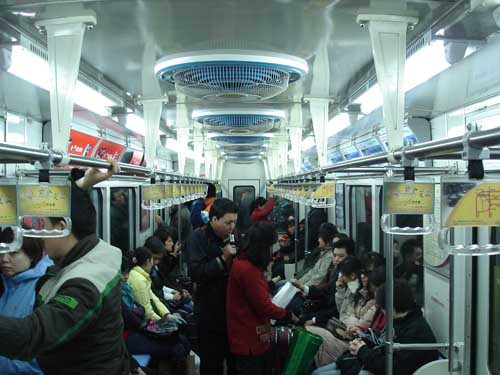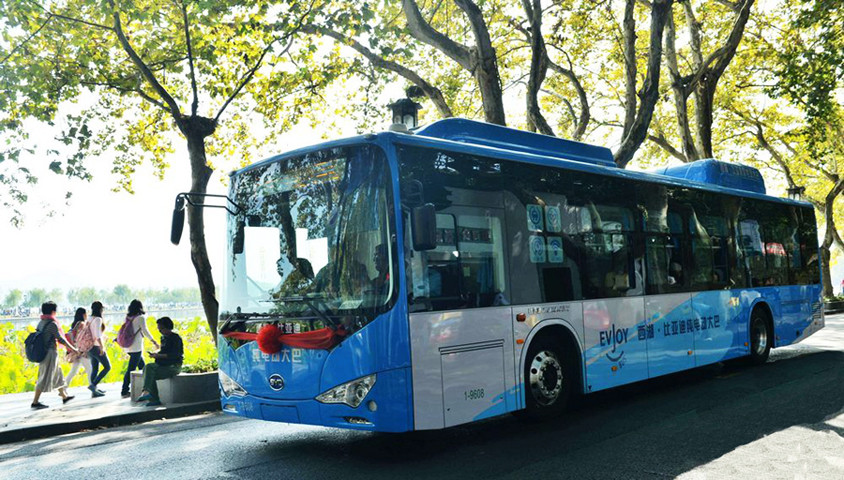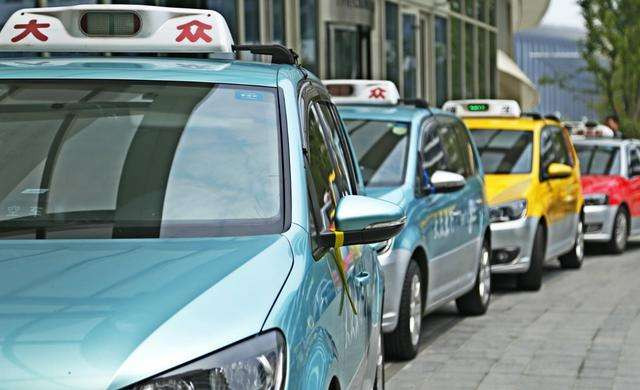Transportation in China
Let’s try not to get lost, shall we?
With city populations being larger than or equal to some countries, there have to be effective and efficient ways of getting around. Thankfully for us there are many means of transportation in China, though some are more dangerous than others.
Subway

By far one of the most efficient method of transportation in China is by taking the subway. The convenience of getting around on the subway is taken for granted and you will be sure to miss it when you go back to your home country.
With stops near all the main tourist attractions, popular areas and neighborhoods as well as little to no delays, the metro system is something other countries can learn from. In Shanghai and Beijing you’ll pay 4RMB for long distances and 3RMB in smaller cities such as Chengdu and Hangzhou.
Bus

A cheap, however less reliable, alternative is taking the public bus. The public busses generally run from 6am to 11pm and are free for children. Adults generally pay a starting fee of 1RMB for the first 10 km (or 2RMB on air-conditioned busses – worth it in the summer).
Train
This way of transportation might not be as frequently used. However, if you wish to travel within China this is a very good way of transportation. Now, train tickets in China are usually purchased ahead of time (days or even months), as you’ll be able to get a better deal when you book earlier. Once you have purchased your ticket, you have to pick up your ticket with your passport at least an hour before departure. You can collect your ticket a day before you leave if you want to avoid the stress of dealing with crowds of Chinese trying to collect their ticket before their train departs. Usually, you’ll want to get your ticket an hour before your train departs, which gives you enough time to find the right platform and board the train. Be aware that during certain holidays, train stations might be more crowded than usual (like during Chinese new year).
Taxi

A lot of expats prefer to avoid taking taxis at all costs as they generally don’t come with a safety guarantee, meaning seat belts are usually missing. However, taking a friend that’s visiting China for their first Chinese cab ride is quite funny.
Taxi prices are constantly changing. A few years ago, the starting fare in Beijing was 4RMB whereas now it is 13RMB. In Shanghai and Hangzhou the starting fares are 14RMB and 8RMB in Chengdu.
Taxi drivers generally keep to themselves however sometimes you will be lucky and have one that loves to chat so don’t be shy!
Didi
This way of transportation is similar to the Taxi. However, Didi is more known as the Uber of China. It is an app that allows you to order a taxi. You can easily order your Didi on your phone, by simply putting in your pick up point and your final destination. It will automatically look for available drivers and give you their license plate, estimated cost, location and estimated time of arrival. This is super effective, as it will immediately enable you to look for your designated driver and know on what side of the street you’ll be picked up. The Didi app is very useful, as it will enable you to leave to, from where ever and whenever you want.
Tuk tuk
If you’re feeling particularly adventures, take a tuktuk. Mostly found in Beijing, racing through traffic on one of these is such a (slightly terrifying) thrill. Make sure you tell your driver where you are going and set the price before you get on, tuktuk drivers are notorious for arguing and asking prices well above 100RMB. When you know that you can usually get a ride for 15-20RMB, this is quite ridiculous and doesn’t even come with any insurance.
Sharing bike
The newest and greatest craze in China is the bike sharing system. With Mobike and OFO kickstarting the trend, these bikes are found on every street.
How does it work?
You’ll need a Chinese bank account to use the apps. Once you’ve downloaded the app, put in your personal information and pay the deposit. Be careful, it may take a few days to process so you won’t be able to use the bikes straight away. When everything is set up, you’re ready to go! Scan the QR code on the back of any bike you see on the street and away you go. When you’re done, leave the bike anywhere (in a bike friendly spot of course).
OFO currently doesn’t require any form of Chinese documents when signing up, just download the app in your Appstore, and get started!
How much is it?
For regular bikes, the fare is usually 1 or 2 RMB per hour. What are you waiting for? This is definitely the best way to get around the city, to get home or to roll up to the club.